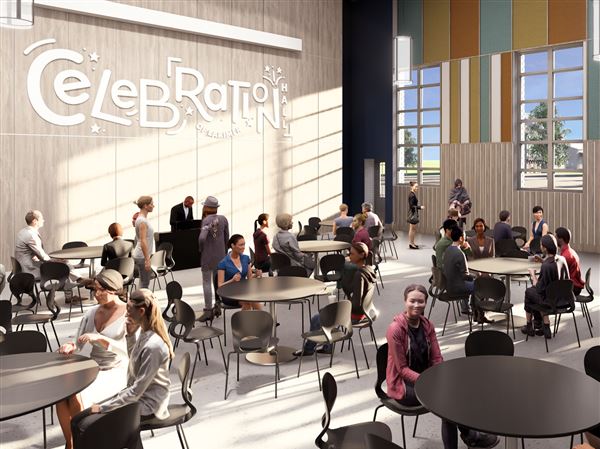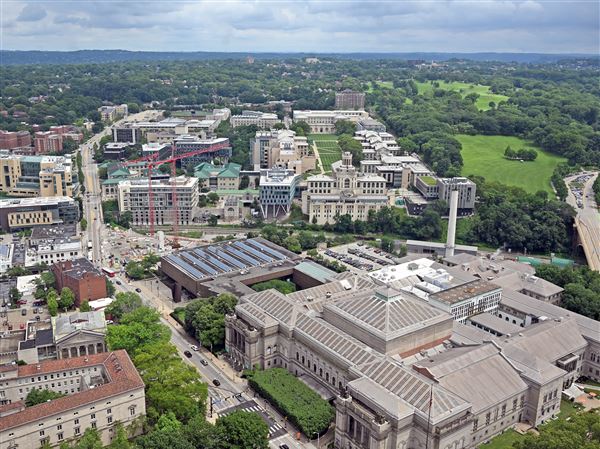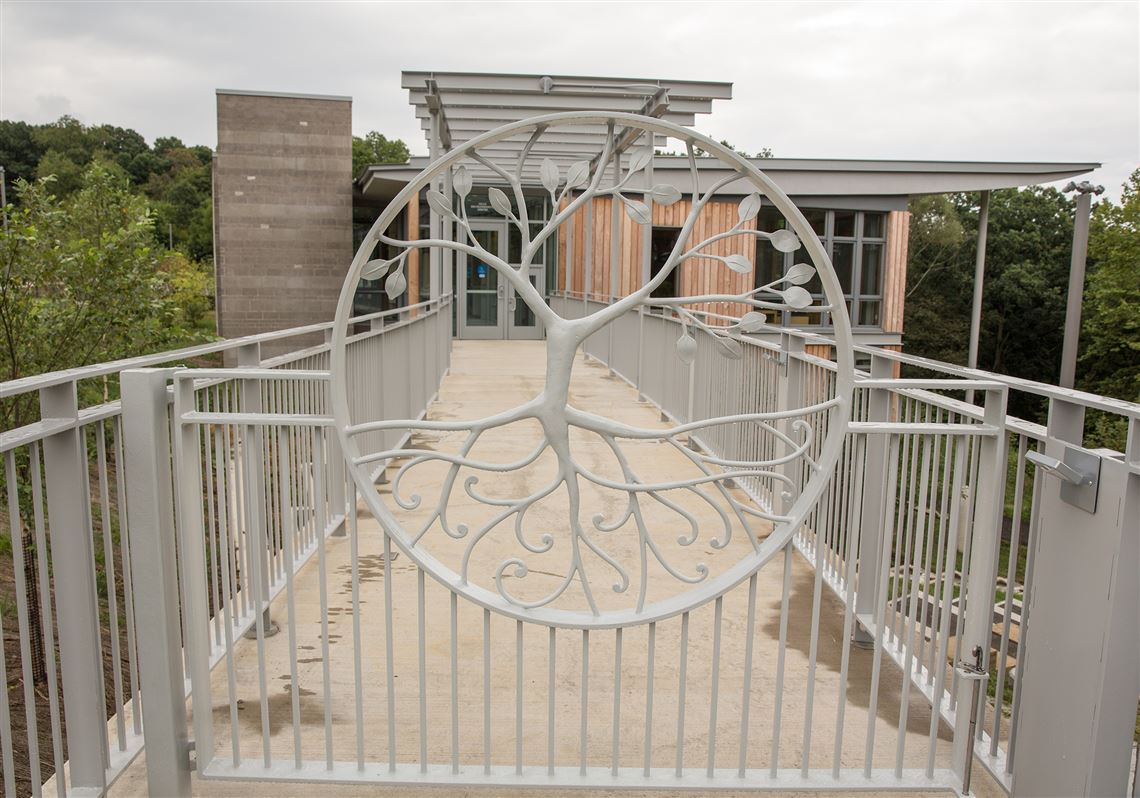The “Let’s Talk About Parks” series is designed to encourage exploration and discovery of Pittsburgh’s urban parks.
Pittsburgh’s amazing city parks are the ultimate outdoor classrooms. There’s plenty of space, great things to see and do no matter what the weather, and there’s always something new and amazing around every tree, hillside, or winding trail. Now, with the newly opened Frick Environmental Center, you also have one of the world’s greenest buildings as the welcoming starting point for your incredible parks. Designed to be the first free and public building in the world that is LEED Platinum and Living Building certified, now is the perfect time to take a walking tour of this awesome building and the grounds around it. Here’s a 10-step guide to the highlights of the Pittsburgh Parks Conservancy’s Frick Environmental Center in Frick Park.
As you approach the front gates off of Beechwood Boulevard, look at the gatehouse to your right. Look for flower and leaf shapes in the ironwork of the gatehouse door and windows, including a lily at the apex of the entrance door. It is just one of many details meant to bring touches of nature to the Frick Environmental Center building and site. As you pass the gatehouses, bear to the left and walk toward the large covered parking lot. Once you’re under the roof (and have checked for approaching cars), look up. You’ll notice that this is no normal roof. In fact, this one is made of thousands of solar cells. These solar arrays gather the sun’s energy and help the Frick Environmental Center collect as much energy as it uses. The solar arrays’ sloping roofline also help collect rainwater, funneling in into the two large silver water barrels you see at the front edge of the parking lot. This water will be used for watering plants and other non-potable uses.
Next, walk past the barn and restrooms, along the curving path until you reach the fountain. Inspired by the original fountain that stood nearby, this one is designed to have a lower water stream while still having the sound and reflective qualities of the original fountain. Its design will use much less water than other fountains its size, and has edging stones meant for sitting to rest or meet friends. Now continue on the curved path, and pass onto the bridge that leads to the entrance doors. As you approach the doors, look to your left, and you’ll see one of the two outdoor classrooms. These covered open air spaces are perfect for being outside while still shielded from the elements. Now, notice that there are two entrance doors. In order to make everyone feel welcome, there is a full-sized adult door, as well as a smaller, kid-sized door.
Once inside, walk along the windows until you see the entrance desk at the other end of the building. This is no ordinary desk. It’s made from wood found on the construction site of the Frick Environmental Center, and its intertwining support branches and exposed wood grain are amazing to see. Take a left at the desk, and you’ll be in the living room, where you’ll see other furniture — including square end tables with big open circular cut-outs. They’re perfect for climbing through, or for counting the rings to see the age of the tree it’s made from. Now, step out on the balcony to see another fun detail. Look at the windows and the two-story support columns. The windows are different widths, and they — and the columns — are spaced unevenly. They are designed this way to give the feeling of the random placement and varied sizes of the trees in the surrounding woods.
After you’ve looked around the interior of the building — which is heated and cooled through a system involving 18 geothermal wells drilled over 500 feet deep — exit past the front desk. Pick up a map before you go outside and check out the energy diagram on the back. It shows where the geothermal wells, water collection, natural building ventilation and other innovative energy highlights of the Frick Environmental Center are located.
Once outside, look down to the curving, layered sandstone below. If you think it looks like layers of earth from a topographical map, you’re spot on. When it rains, water from the roof will be channeled to the sandstone, flowing over it like a river making its way over layers of earth. Finally, as you cross the bridge look to your left and you’ll see the outdoor amphitheater. With regionally-sourced sandstone benches and Frick Park’s trees and trails as its backdrop, it’s quite possibly the best seat in city. Finally, as you exit the bridge, look at the round, grey-painted iron gate. See if you can spot the tree and roots in its design. It’s just one of the many creative nature-inspired design touches built into the Frick Environmental Center.
For a Frick Environmental Center slide show, designed by Bohlin Cywinski Jackson and built by PJ Dick, visit www.pittsburghparks.org/frick-environmental-center.
First Published: September 27, 2016, 4:00 a.m.

















